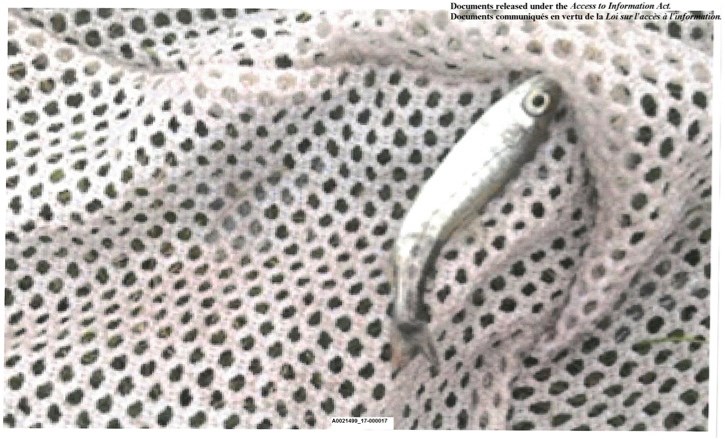Parks Canada is looking at the possibility of removing all fish or draining Banff’s Johnson Lake to get rid of whirling disease there.
No decisions have been made, but officials say they’re considering several options for the small lake as they hope to prevent the fish disease from spreading into Two Jack Lake and Lake Minnewanka as well as the Upper Cascade River system where threatened westslope cutthroat trout live.
Bill Hunt, resource conservation manager for Banff National Park, said they are first trying to determine if Johnson Lake is a hotspot for the disease.
“The shallow water and unusually warm temperatures and the muddy bottom are characteristics of what’s often referred to as a hotspot for whirling disease,” he said.
“We’ll try to do testing to determine whether there’s a high, medium or low prevalence of whirling disease. If it turns out, in fact, it is a hotspot, it may be appropriate to take action to contain or remove whirling disease within Johnson Lake.”
Whirling disease – named after the circular swimming patterns of infected fish – was confirmed in fish Johnson Lake in late August. It was the first known case of the disease in Canada, but has been known to crush populations in the U.S.
It can affect several fish species found in Alberta – bull trout, cutthroat trout, rainbow trout, mountain whitefish, brown and brook trout. Native bull trout are threatened provincially and westslope cutthroat are listed as threatened federally.
Tests have confirmed the disease is in the Bow River, both upstream and downstream of Bow Falls, but so far preliminary testing in nearby Two Jack Lake and Lake Minnewanka hasn’t turned up any evidence of the fish disease.
Hunt said a primary concern is that Lake Minnewanka connects to the Upper Cascade River system, where there are several core populations of westslope cutthroat trout.
“It’s very important for us to keep it out of the Upper Cascade,” Hunt said.
The parasite that causes whirling disease can spread from one lake to another through contaminated bait, fishing gear, equipment and birds. There are no treatment options currently available for the disease.
Hunt said the removal of fish, or draining or partially draining Johnson Lake, are possible options following a lot of consultation with experts in Canada and the U.S., and he noted any plan would require an environmental impact assessment.
“We have to look back to the life history of whirling disease. The first thing is it needs a fish host to complete the life cycle and by removing fish from Johnson Lake we could break that cycle,” he said.
“Secondly, the other vector of the disease is movement of mud. If we were to lower water levels in the lake during the winter, we could freeze some of that mud and it’s known freezing also kills the spores as well.”
The disease is caused by a parasite that burrows into the head and spine of salmon, trout and whitefish. Whirling fish cannot maintain equilibrium and swim erratically, often until exhausted.
Visible signs of the disease include a blackened tail, which is caused by pressure on nerves that control pigmentation. Permanent deformities of the head and spine are caused by cartilage damage, associated inflammation and interference with normal bone development.
The fish can die from direct physical damage or because they can’t feed or evade predators.
Research in the U.S shows the disease does has not always resulted in trout population declines, and there have been cases where the parasite has persisted for decades with no observable signs of the disease in fish.
That said, when high numbers of parasites combine with susceptible fish, whirling disease can result in high mortality rates. In some locations in the U.S., severe wild trout population declines have been attributed to whirling disease.
Hunt said recent research has shown it might not take up to 30 years to get rid of the disease as previously thought.
“It could be four to five years,” he said.
Hunt said options to deal with the disease in Johnson Lake come with different financial costs and environmental considerations, as well as noting it is a very popular swimming hole for residents and visitors.
“We’d be trying to do a lot of work in the winter months and allowing the lake to refill in spring or summer,” he said.
“If we could remove whirling disease as a vector and get the lake reopened, there may be a short-term inconvenience, but we’re looking to a long-term solution.”
Since its discovery in fish in Johnson Lake, whirling disease has also been confirmed by the Canadian Food and Inspection Agency in nine other locations in Banff National Park, above and below Bow Falls.
Its presence has also been found in four commercial fish hatcheries in Alberta and in Lott Creek in Rocky View County closer to Calgary.




